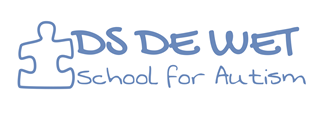Here we'll share some of our favourite books, websites, Facebook pages, training opportunities and educational resources. Click on the links below for relevant information.
What is Autisms Spectrum Disorder (ASD)?
Autism Spectrum Disorder (ASD) is a neurodevelopmental disorder characterised by "persistent deficits in social communication and social interaction across multiple contexts, including deficits in social reciprocity, nonverbal communicative behaviours used for social interaction, and skills in developing, maintaining, and understanding relationships [as well as] the presence of restricted, repetitive patterns of behaviour, interests, or activities" (American Psychiatric Association).
Symptoms of Autism generally present within the first 3 years of life, and. differs from person to person in severity and combinations of symptoms. There is a great range of abilities and characteristics of children with autism spectrum disorder — no two children appear or behave the same way. Symptoms can range from mild to severe and often change over time.
Characteristics of autism spectrum disorder fall into two categories, namely
- Social interaction and communication problems, including difficulties in normal back-and-forth conversation, reduced sharing of interests or emotions, challenges in understanding or responding to social cues such as eye contact and facial expressions, deficits in developing/maintaining/understanding relationships, and others.
- Restricted and repetitive patterns of behaviours, interests or activities, such as hand-flapping and toe-walking, playing with toys in an uncommon way (such as lining up cars or flipping objects), speaking in a unique way (such as using odd patterns or pitches in speaking or “scripting” from favourite shows), having significant need for a predictable routine or structure, exhibiting intense interests in activities that are uncommon for a similarly aged child, experiencing the sensory aspects of the world in an unusual or extreme way (such as indifference to pain/temperature, excessive smelling/touching of objects, fascination with lights and movement, being overwhelmed with loud noises, etc), and others.
Statistics
- About 1 in 59 children are identified with ASD according to estimates from the Centres for Disease Control and Preventions ’s Autism and Developmental Disabilities Monitoring (ADDM) Network.
- ASD is reported to occur in all racial, ethnic, and socioeconomic groups.
- ASD is about 4 times more common among boys than among girls.
- Studies in Asia, Europe, and North America have identified individuals with ASD with an average prevalence of between 1% and 2%
- Parents who have a child with ASD have a 2%–18% chance of having a second child who is also affected.
- ASD tends to occur more often in people who have certain genetic or chromosomal conditions. About 10% of children with autism are also identified as having Down syndrome, fragile X syndrome, tuberous sclerosisExternal, or other genetic and chromosomal disorders.
- Almost half (44%) of children identified with ASD have average to above average intellectual ability.
- Children born to older parents are at a higher risk for having ASD.
- A small percentage of children who are born prematurely or with low birth weight are at greater risk for having ASD.
- ASD commonly co-occurs with other developmental, psychiatric, neurologic, chromosomal, and genetic diagnoses. The co-occurrence of one or more non-ASD developmental diagnoses is 83%. The co-occurrence of one or more psychiatric diagnoses is 10%.
How is ASD diagnosed?
Treatment
Every child or adult with autism has unique strengths and challenges, so there is no one size fits all approach to autism treatment and intervention. Each autism intervention or treatment plan should be tailored to address the person's specific needs. Read more about different treatment and intervention options here.
Makaton
Makaton is a unique language programme using a systematic multi-modal approach of speech, signs and symbols to teach communication, language and literacy skills to people with communication and learning difficulties. Makaton is always used together with normal grammatical speech and is a source of highly functional vocabulary for people with communication needs and their interactive partners.
Makaton regularly offers hands-on training sessions across South Africa
TEACCH Autism Program
TEACCH Autism Program (Treatment and Education of Autistic and Communication related handicapped CHildren) is an evidence-based service, training, and research program for individuals of all ages and skill levels with autism spectrum disorder.
The TEACCH Autism Program has several key components including
- an understanding of the culture of autism - the characteristic patterns of thinking and behaviour seen in individuals on the autism spectrum.
- the development of an individualised person (and family)-centred plan for each client.
- the use of structured teaching (which consists of four elements: physical structure; visual schedules; work systems; and task organisation).
- the use of a wide range of cognitive, developmental, educational and behavioural strategies.
- co-operation between therapists and parents
TEACCH offers a variety of training and consultation to professionals who work with individuals with ASD.
